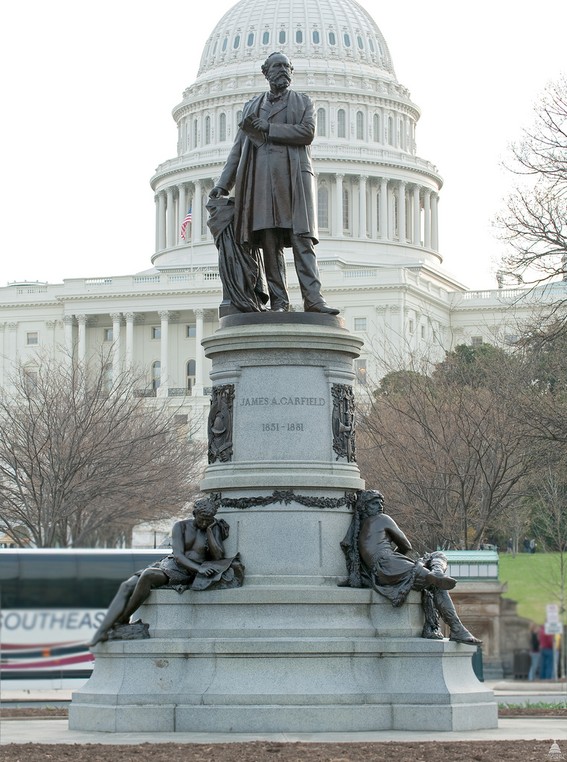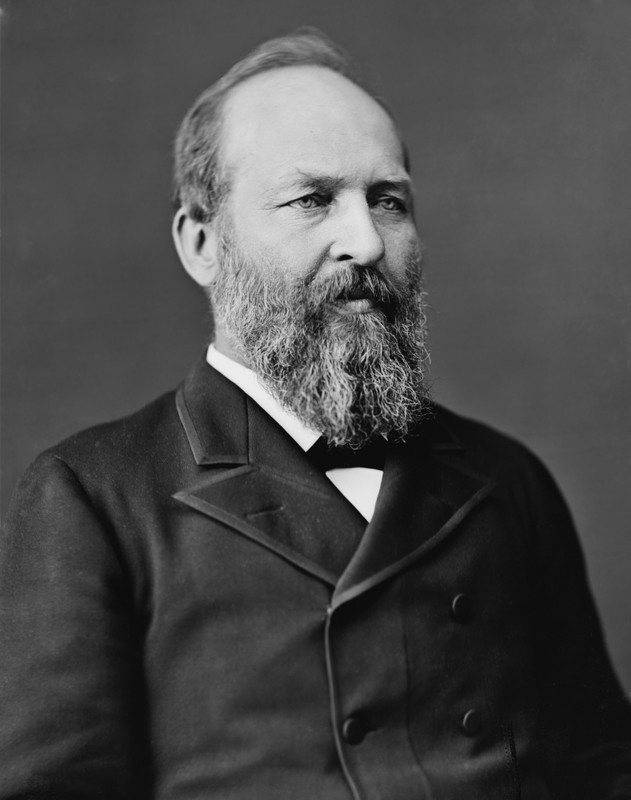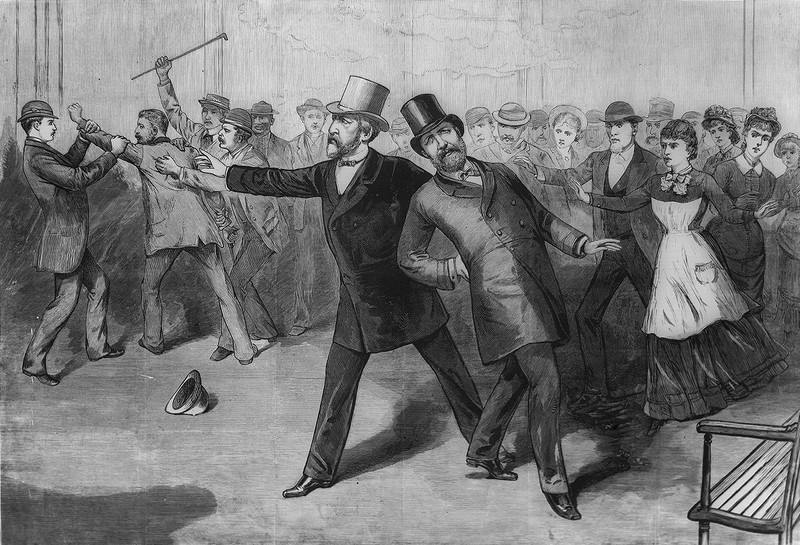James A. Garfield Monument
Introduction
Text-to-speech Audio
Images
James A. Garfield Monument on the grounds of the U.S. Capitol in Washington, D.C.

James A. Garfield (1831-1881)

A contemporary engraving depicting Garfield's assassination

Backstory and Context
Text-to-speech Audio
James Abram Garfield was born in a log cabin on November 19, 1831 in Cuyahoga County, Ohio. Before his second birthday, his father died, forcing his mother to not only raise him and his siblings, but also manage the small, struggling family farm. A bright child, Garfield escaped his harsh reality by reading voraciously. Initially yearning to become a sailor and travel the world, he settled for a job as a mule team driver on the Ohio and Erie Canal. Somehow, Garfield scraped together enough money to enroll at Western Reserve Eclectic Institute (now Hiram College). After two years there, he attended Williams College in Massachusetts, graduating in 1856. Garfield then returned to Western Reserve Eclectic Institute to become a professor of classical languages. Only a year later, at the age of twenty-five, he became the school’s president. A member of the newly formed Republican Party, Garfield won a seat in the Ohio legislature in 1859. When southern slaveholding states began to secede, he advocated for the use of force to preserve the Union.
Following the outbreak of the Civil War, Garfield received a commission as a colonel and helped organize the Forty-Second Ohio Infantry. Early in the conflict, he saw combat in eastern Kentucky and at the Siege of Corinth and the Battle of Shiloh. In the fall of 1862, Garfield was elected to the U.S. House of Representatives. Initially hesitant to resign his commission, he required some convincing. Garfield received it from none other than President Abraham Lincoln, who thought highly of him and was in search of effective Republicans in Congress. Before taking office, however, he became Chief of Staff for Major General William S. Rosecrans, commander of the Army of the Cumberland, and participated in the Battle of Chickamauga in September 1863. Later that year, he left the U.S. Army at the rank of major general.
Unlike his tenure in the military, Garfield’s time in Congress was lengthy. He won reelection eight times, serving for a total of eighteen years on Capitol Hill, eventually becoming the leading Republican in the U.S. House of Representatives. In 1880, the Ohio legislature elected him to the U.S. Senate, but Garfield never took his seat. That same year, the Republican Party selected him as their nominee for President of the United States. In the fall, Garfield won a close election, defeating Democratic nominee Winfield Scott Hancock, who also served as a U.S. Army general during the Civil War. Less than four months after his inauguration, on July 2, 1881, he was shot twice by Charles Guiteau, a disgruntled officer seeker, while waiting at a train station in Washington, D.C. The first bullet merely grazed Garfield, but the second penetrated his back and lodged itself deep within his abdomen, settling behind his pancreas. For several weeks, Garfield languished in pain as doctors unsuccessfully searched for the projectile. Riddled with infection from the countless unsterile examinations, he passed away on September 19 at the age of forty-nine. He was buried in Cleveland’s Lake View Cemetery.
Garfield’s death came as the Society of the Army of the Cumberland was holding its annual reunion in Chattanooga, Tennessee. Before adjourning, members of the Union veterans’ organization voted to create the Garfield Memorial Committee and charged it with erecting a monument to their former officer and fellow member in Washington, D.C. After fundraising proved challenging, the committee held a fair in the Capitol Rotunda in 1882, which raised nearly $15,000. The following year, Congress appropriated $30,000 for the project. At the 1883 reunion of the veterans’ organization, members selected esteemed New York sculptor John Quincy Adams Ward to design the monument. Dedicated near the U.S. Capitol on May 12, 1887, the monument consists of a larger-than-life sized bronze statue of Garfield on a marble pedestal, designed by prominent architect Richard Morris Hunt. Ward depicted Garfield standing, as if delivering a speech. Lounging around the base of the pedestal are three larger-than-life-sized bronze figures, each representing one of the three stages of Garfield’s life: scholar, soldier, and stateman.
Sources
Freidel, Frank and Hugh S. Sidey. The Presidents of the United States of America. Washington, DC: White House Historical Association, 2006.
History.com Editors. "James A. Garfield" History. A&E Television Networks. 10 June 2019. Web. 13 May 2021 <https://www.history.com/topics/us-presidents/james-a-garfield>.
Jacob, Kathryn Allamong. Testament to Union: Civil War Monuments in Washington, D.C. Baltimore: The Johns Hopkins University Press, 1998.
https://www.aoc.gov/explore-capitol-campus/art/garfield-monument
https://en.wikipedia.org/wiki/James_A._Garfield
https://en.wikipedia.org/wiki/Assassination_of_James_A._Garfield
